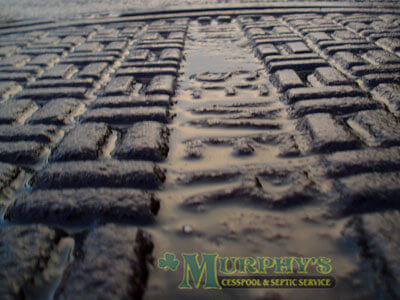Sewer & Drain Cleaning Professional Services
THE BEST CESSPOOL & SEPTIC COMPANY ON LONG ISLAND
NYSeptic.com
Email: Service@NYSeptic.com
Phone 1: 631.758.4171
Phone 2: 631.476.5484
Fax: 631.475.2898
Sewer cleaning removes unwanted materials, such as non-biodegradable debris or grease and sludge build-up, from a pipe. Most sewer cleanings occur as part of a routine maintenance program, though cleaners also respond to emergency callouts for overflowing or damaged lines.
Most sewers on Long Island are maintained by local utility companies, though property owners are usually responsible for lateral connections. Murphy's Cesspool & Septic Service assist with all sewer and drain construction and repairs. We also provide sound advice when it comes to decision making. This decision is usually guided by factors like labor and equipment availability and budget.
Routinely cleaning sewer systems can prevent blockages, clogged sewers, overflows and costly repairs. Small debris and grease buildup can turn into big problems down the road if lines are not regularly cleared and inspected, as can poorly installed or damaged pipes. On average, sewer cleaning and inspection should occur every year and a half to two years. When deciding how often to clean a line, experts consider the age of the sewer system, the season, the location of the line, the pipe diameter, and the impact of vibrations or tremors from nearby roadways. These stressors have ongoing consequences for a sewer’s condition, so it’s important to have a maintenance plan in place to check for unwanted materials and pipeline deterioration.
THE BEST CESSPOOL & SEPTIC COMPANY ON LONG ISLAND
NYSeptic.com
Email: Service@NYSeptic.com
Phone 1: 631.758.4171
Phone 2: 631.476.5484
Fax: 631.475.2898
Sewer Cleaning Procedures
So how do you clean a sewer line? Sewer operators deploy several different methods to clean sewers.
Hydraulic Sewer Cleaning Methods
Hydraulic cleaning methods include equipment that uses water and water velocity to clean the invert and walls of the sewer pipe, according to the EPA.
Hydro jetting, or jetting, uses water and pressurized air to push out debris and break down clogs. Jetters are high-efficiency machines and the most common solution used today for cleaning sewers. They propel spray through a hose and out a specialized rotating nozzle to clean and break-up debris. Water jetting is a safe, chemical-free process that does not damage pipes.
The jetting process can be customized in several ways for increased efficiency. Specialized nozzle designs may be used for different kinds of debris and blockages, such as sand, dirt, grease and roots, or in different sizes of pipe. Many operators also use a combination sewer cleaner, which combines high-pressure water jetting and a high-flow vacuum source: The jetter blasts build up and debris down the line, and the vacuum collects the material. Water consumption is a common concern during jetting, but most large jetter trucks have a water tank system, so they arrive at the job site with a pre-filled supply, ready to start jetting. Many machines can also now collect and recycle the water used in the cleaning process. Water can also be used from nearby open waters or springs, though this practice is less common.
THE BEST CESSPOOL & SEPTIC COMPANY ON LONG ISLAND
NYSeptic.com
Email: Service@NYSeptic.com
Phone 1: 631.758.4171
Phone 2: 631.476.5484
Fax: 631.475.2898
Mechanical Sewer Cleaning Methods
Rodding is an older mechanical cleaning method in which a flexible metal rod is inserted into the pipe, and an engine rotates a bladed head, allowing it to break up grease deposits, cut roots and loosen debris. Rodding is generally used to clean lines 12” in diameter or smaller.
Pigs are capsules sized to the diameter of a pipe and then forced through a line, scraping material from the sides and pushing debris downstream as it goes. Today, they are most commonly made of foam and referred to as poly pigs.
Before the introduction of the jetter, bucket machines were the go-to solution for sewer cleaning. Today, this time-consuming method is still used on a limited basis for heavily clogged lines 18 inches in diameter or larger. With them, a bucket is pulled along a cable from one manhole to the next, scraping and collecting debris as it goes. Call Murphy's Cesspool & Septic to assist you with all your Sewer, Drain, & Septic needs today.





Comments
Post a Comment